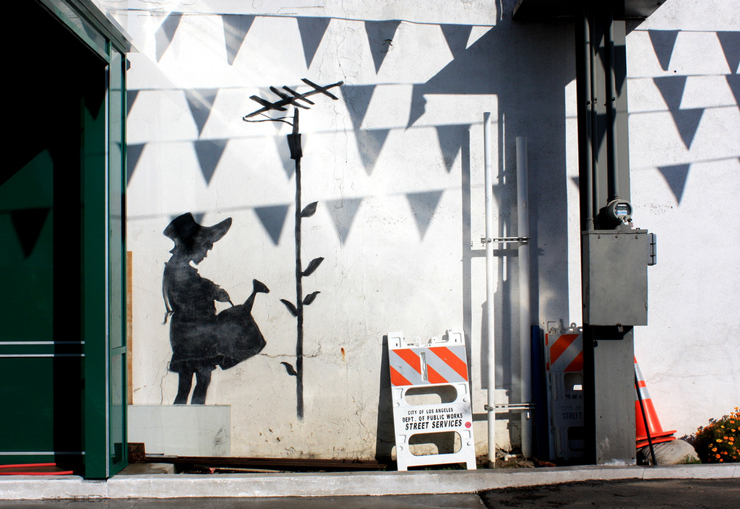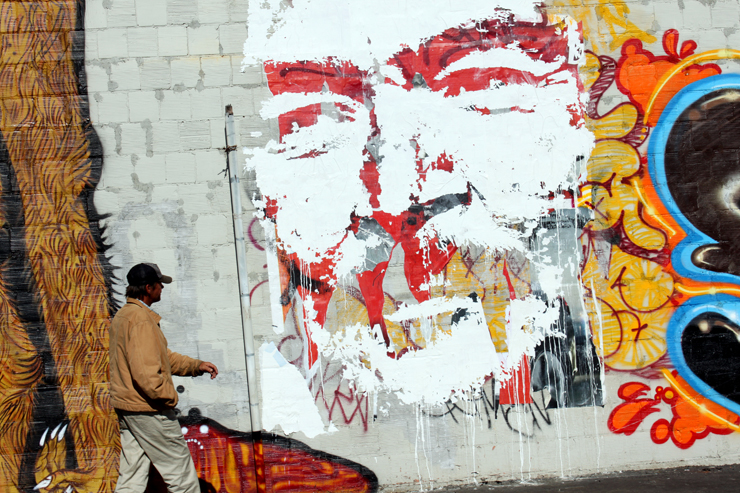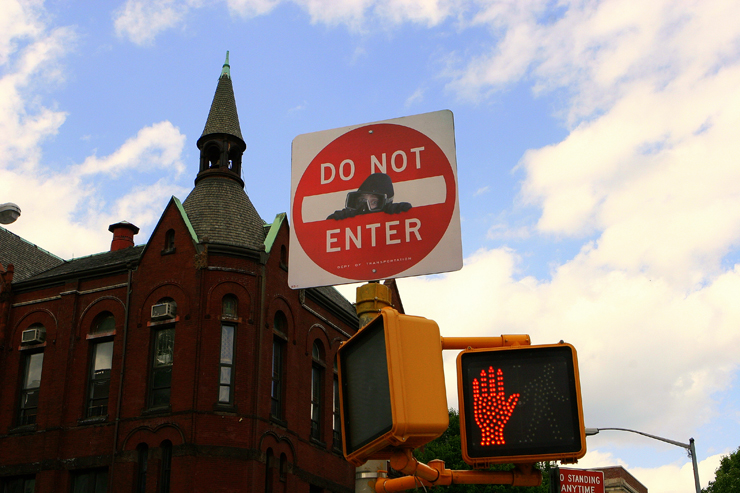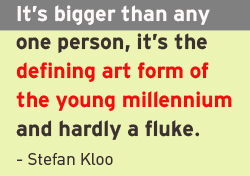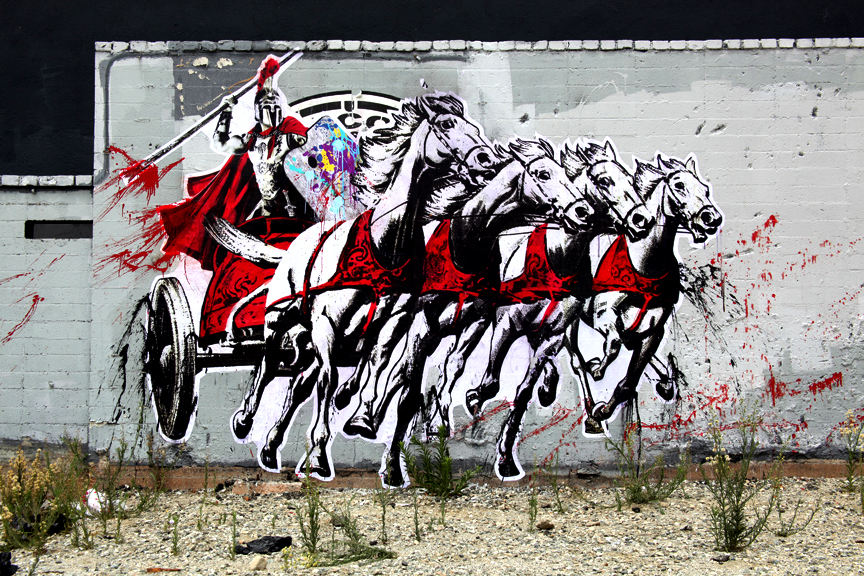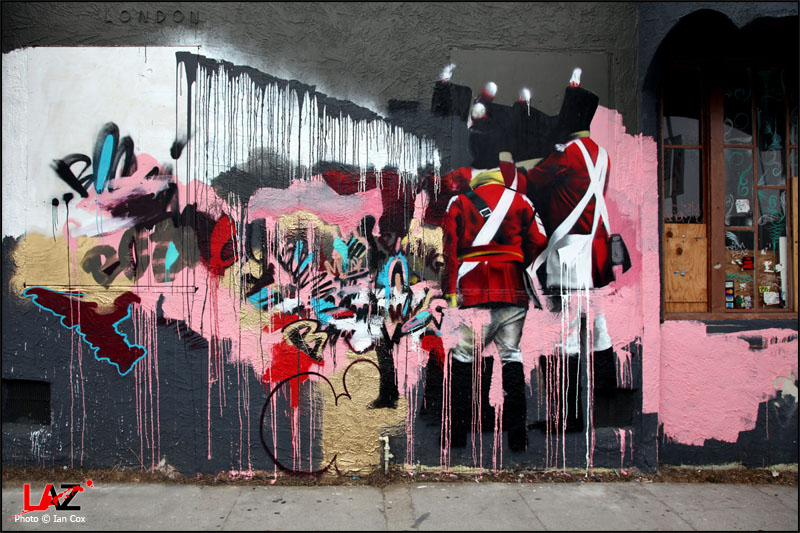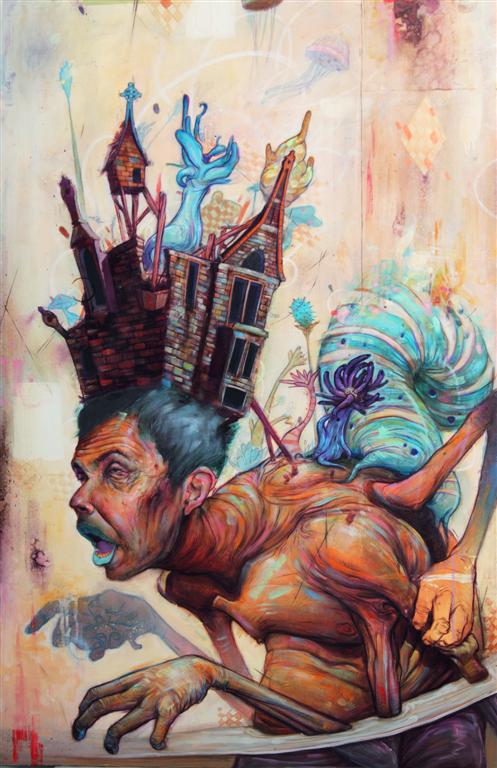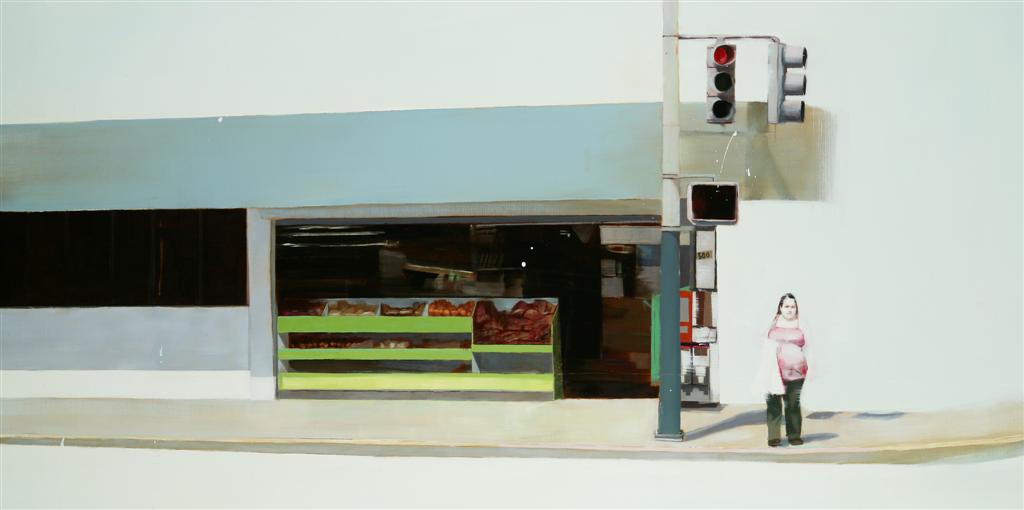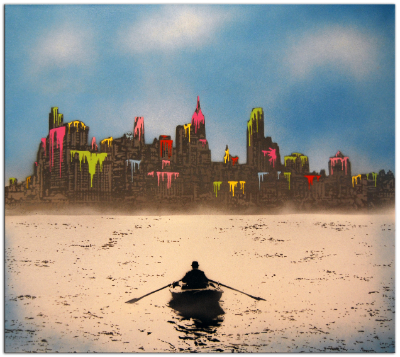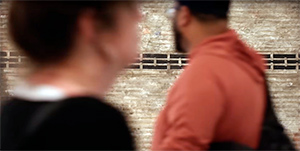
We continue with Part 2 of our interview with Becki Fuller, Stefan Kloo, and Luna Park; three Street Art photographers who have reached a certain stature among their peers for their contributions to the scene. As each describes their work and their experiences as documenters and creative artists, one can see that their level of understanding goes beyond merely academic or stenographic while including elements of both. From beginner to expert, there are artists on both side of the camera and the very nature of Street Art provides a forum for each.
Google Maps does a pretty good job at simply documenting streets. These professionals and others like them know how to discern, interpret and present the work of Street Artists in ways that can add context, meaning, breath and life. We heartily thank these three artists for their candid and insightful responses (and incisive wit!) and we look forward to including many other voices in the ongoing discovery that is Street Art today.
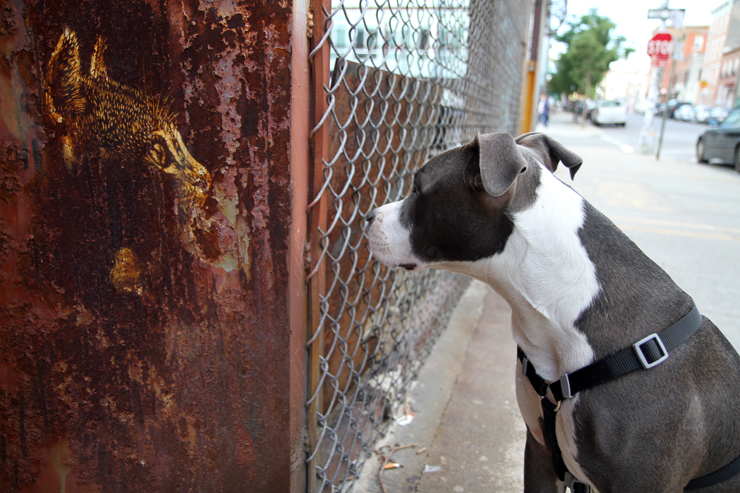
C215 © Becki Fuller
Brooklyn Street Art: Five years ago the act of documenting pieces by street artists was the work of a relative handful of photographers. Thanks to new technology there are more photographers today documenting it and some Street Artists document their own work, posting images on their personal Flickr pages and web sites before the photographers get to them. How do you feel about this and does it change your view of your efforts or you view of the artists?
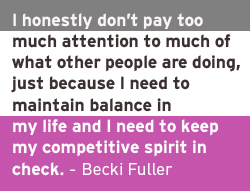 Becki Fuller: I say the more people who are interested in street art enough to document it, the better! But yes, it has definitely changed things. When I first started shooting street art, I easily received a lot of attention just because there was a much smaller group of people who were documenting it and sharing it. And for a while it took some of the fun out of it for me when I realized that people were trading locations with each other or getting them from artists even before the work went up, really turning on the pressure to photograph a piece within hours of its appearance. But I quickly came to terms with what I want to do and what I am willing to do in order to continue enjoying street art photography. I honestly don’t pay too much attention to much of what other people are doing, just because I need to maintain balance in my life and I need to keep my competitive spirit in check.
Becki Fuller: I say the more people who are interested in street art enough to document it, the better! But yes, it has definitely changed things. When I first started shooting street art, I easily received a lot of attention just because there was a much smaller group of people who were documenting it and sharing it. And for a while it took some of the fun out of it for me when I realized that people were trading locations with each other or getting them from artists even before the work went up, really turning on the pressure to photograph a piece within hours of its appearance. But I quickly came to terms with what I want to do and what I am willing to do in order to continue enjoying street art photography. I honestly don’t pay too much attention to much of what other people are doing, just because I need to maintain balance in my life and I need to keep my competitive spirit in check.
As far as the artists themselves photographing their work goes, well, that’s their right…but (with a few exceptions, such as JR) they also tend to reinforce where their talents lie, and it’s not in photography.
Luna Park: Street art has come of age in the era of social media. Thanks to modern technology, everyone is a photographer now and everyone has the tools with which to position himself or herself within the scene and, if desired, promote themselves within the art marketplace. Where there wasn’t a street art media or blogosphere five years ago, there most certainly is now. The speed at which images are disseminated has been amplified and the whole world is watching. That artists photograph and promote their own work is only natural – some do a better job of it than others – and that’s their prerogative. The Internet has an insatiable appetite and it constantly demands more content; as a result, I feel more pressure now than ever to continue to deliver the goods.
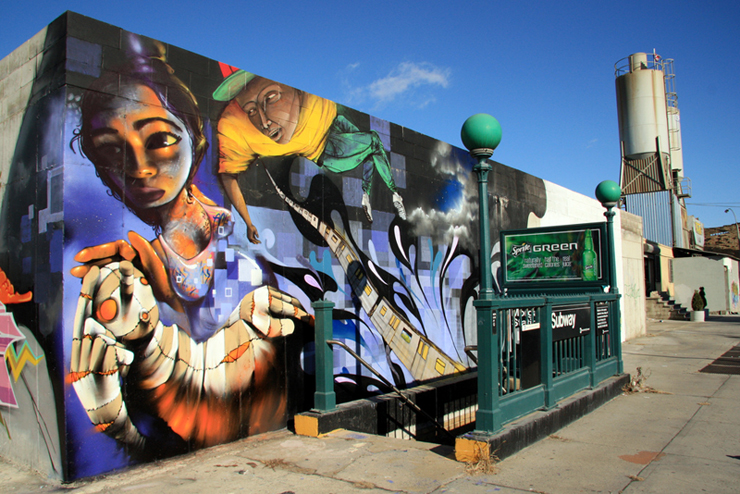
Cern, Cekis, Inti. © Luna Park
There are definitely more players on the documentation field, but I enjoy a little friendly competition, as it motivates me to keep on top of my game. Thanks to my relationships with many artists and my standing in the community, I am often tipped off to the locations of pieces from artists directly or others who share my interests. Five years ago I would have left the house with my camera, without any expectations of what I might find and open to discovery. Sometimes I miss that.
Today I go about following up on leads or hunches much more strategically, all the while ready to adjust my travels around the city as needed. Of course there are still plenty of serendipitous sightings – I revel in every lucky, random encounter. The downside of having achieved a certain level of recognition is that I get a ton of unsolicited email, either from artists eager to introduce me to their work or from PR flacks and marketers desperate to have me shill their products to their target audience. At times it can feel very calculated and cynical, yet by and large I remain unaffected by this type of maneuvering. I am still passionate about street art after all these years and thankful for all the wonderful people that have come into my life because of it. I am never bored, as I constantly have places to go and things to see. My enthusiasm is wholly driven by inspiration and the desire to play it forward.
 Stefan Kloo: I’m absolutely O.K. with others doing the same thing, patrolling the same alleys, getting the same shots. How can you not. It’s like stone soup; it just gets better with everybody contributing the missing ingredient. So you got a better shot, got it first, got the only shot before its gone? What of it? – It’s not a competition! And don’t expect anything in return, most of the artists don’t. If it chaps your hide that someone else got the same shot or got it first, it either means that you’re taking yourself too serious or that you’re a bit of a one trick pony. Just find a different angle, heck find a different subject if your doing it for the approval of others.
Stefan Kloo: I’m absolutely O.K. with others doing the same thing, patrolling the same alleys, getting the same shots. How can you not. It’s like stone soup; it just gets better with everybody contributing the missing ingredient. So you got a better shot, got it first, got the only shot before its gone? What of it? – It’s not a competition! And don’t expect anything in return, most of the artists don’t. If it chaps your hide that someone else got the same shot or got it first, it either means that you’re taking yourself too serious or that you’re a bit of a one trick pony. Just find a different angle, heck find a different subject if your doing it for the approval of others.
The artists deserve props first and are entitled to a “clean take” on their work. We know how fleeting it is and how often a photo is all you got to show for. Whenever possible it’s probably for the better not to rely on others to document your work. Flickr and the blogosphere definitely changed things for me, for the better. Where I used to practically work in a vacuum I now get to flaunt the shots to peers I didn’t know I had. What’s not to like about that?
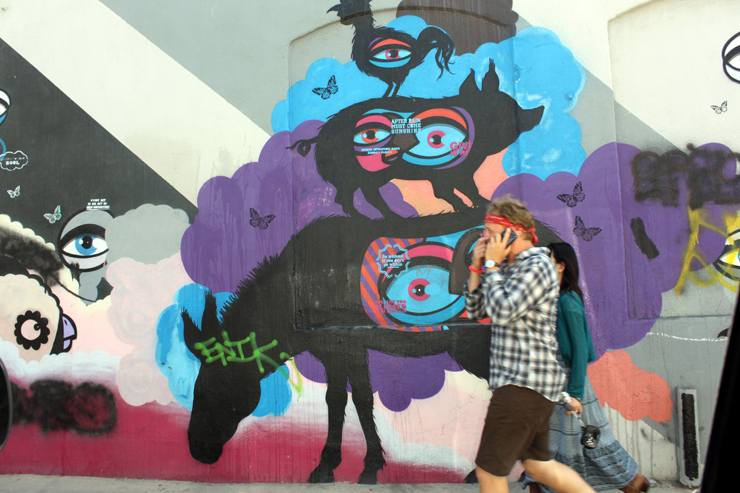
ROA and Chase in Venice, CA. © Stefan Kloo
Brooklyn Street Art: Today there are many websites dedicated to showcasing street art around the world. Many people who run the sites take images and post them without permission or credit to the photographer. What is your opinion of this and should photographers take any action?
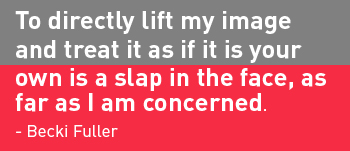 Becki Fuller: Honestly, it really pisses me off when artists or people who should know better do that…I enjoy receiving a nod of recognition for my efforts as much as anyone anywhere does. I spend a lot of time, thought, and money doing what I do, often going into debt just to upgrade my camera or buy a new lens, all without receiving any monetary compensation. I can’t even tell you how many books my photographs have been included in, and it is usually rare for me to receive even so much as a free copy in return. So to directly lift my image and treat it as if it is your own is a slap in the face, as far as I am concerned.
Becki Fuller: Honestly, it really pisses me off when artists or people who should know better do that…I enjoy receiving a nod of recognition for my efforts as much as anyone anywhere does. I spend a lot of time, thought, and money doing what I do, often going into debt just to upgrade my camera or buy a new lens, all without receiving any monetary compensation. I can’t even tell you how many books my photographs have been included in, and it is usually rare for me to receive even so much as a free copy in return. So to directly lift my image and treat it as if it is your own is a slap in the face, as far as I am concerned.
Luna Park: I realize that in putting things online, I open my work up to being stolen, but I still believe the benefits outweigh the risks. It’s unfortunate, but there are unscrupulous sites that continue to post unaccredited photographs, including a few within the larger street art community. I am keenly aware of the pressure to break stories online, but not crediting your sources is just downright disrespectful.
I’ve also encountered an attitude from certain artists who believe that they are not only entitled to dictate what is done with my photographs of their work, but also to freely distribute my photographs without credit. I put a lot of effort into displaying work in the best possible light and always credit artists – it is unfathomable to me that some people think that photographs magically take themselves. I understand that viewers are primarily looking at the artwork depicted, but having a good photograph of it is half the battle. Aside from demanding that credit omissions be rectified, I don’t know what else photographers can do. I am opposed to watermarking, as I find them incredibly distracting. 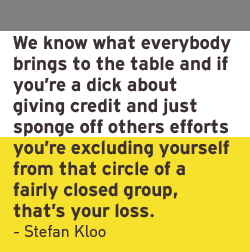
Stefan Kloo: That’s a kick in the taco. You can’t be happy about it. But I don’t think of myself as that important that it warrants a fuzz. I’d like to think that we (street art aficionados) are among friends. We know what everybody brings to the table and if you’re a dick about giving credit and just sponge off others efforts you’re excluding yourself from that circle of a fairly closed group, that’s your loss. It also goes to motive – if you don’t have it in you to credit someone when due, what’s it all about for you then? It’s a lot like having an “assistant” painting or pasting your work – you’re on the outside looking in. If that’s all you got, you’re missing the point. However, the photos should make the rounds, almost regardless of who took the shot.
The art and the artists who created it are the key. Which should not stop you from calling bull on the jockeys and hang them by their nut purse till death is welcome… If anyone makes a buck of a street art photo, two people should get a cut: the artist and the photographer. O.K., and the publisher if you put it in a book. Simple, no? Luckily that’s a dilemma that does not play out very often…
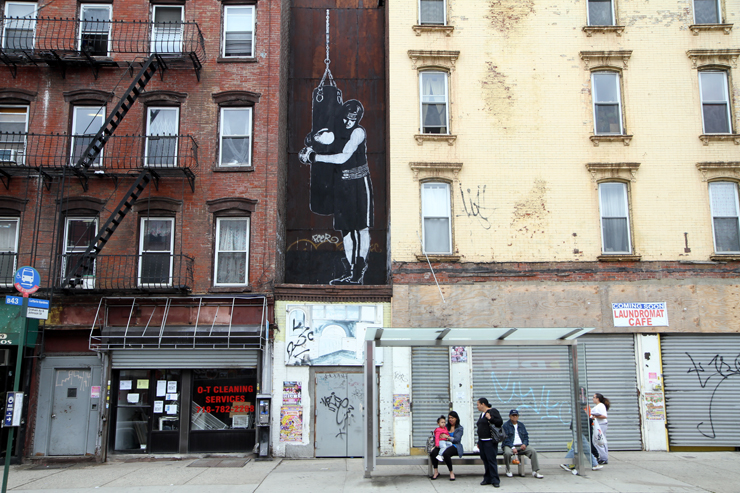
Dolk © Becki Fuller
Brooklyn Street Art: Some art critics have suggested that Street Art enthusiasts, photographers in particular, lack an intellectual and artistic approach to the art that they document and are unable to truly understand Street Art. What’s your opinion on this?
Becki Fuller: At the risk of sounding like a dolt, I don’t think that it is necessary to intellectualize art in order to enjoy it. While a greater understanding of art can definitely enhance your appreciation, I believe that over intellectualizing art leads to a sterile and heartless environment. That’s the main thing that really turned me off from the Chelsea gallery scene in the 2000s and really lead me to Street Art in the first place. Everything seemed so conceptual to the point where you couldn’t enjoy an opening without reading about it first. So I would counter than anyone who believes that you need a PhD in order to appreciate and understand street art probably doesn’t know the first thing about really seeing street art in the first place. 
As far as lacking an artistic approach goes, well, I guess that just depends on the individual. On one hand you have urban photographers such as Nils Müller, Mr. T and Keegan Gibbs. When I look at their photographs, the graffiti/street art becomes secondary to the fact that I am looking at a wicked piece of artwork in its own right. Then you have photographers who become better known for where they have gone, the artwork that they have photographed, and the sheer bulk of what they have to offer. Within this group there are varying levels of artistry, but I would say that all of us do it out of passion and that passion itself can become what is most beautiful about your work.
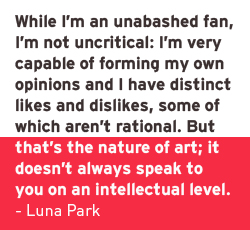 Luna Park: Hogwash. To dismiss all street art photographers as unsophisticated fan boys is an unfair characterization and a gross oversimplification. We are as varied in our backgrounds and talents as the artists whose work we document. In discussing the quality of street art photography, one must differentiate between two issues: the work being documented and the photography itself. Regarding the work being documented, street art photographers are uniquely positioned to recognize trends, chart artistic growth, and identify influences within our own particular street art microcosms. While I’m an unabashed fan, I’m not uncritical: I’m very capable of forming my own opinions and I have distinct likes and dislikes, some of which aren’t rational. But that’s the nature of art; it doesn’t always speak to you on an intellectual level. Astute followers of my photo stream know that what I post is heavily curated, that is, what is missing from my Flickr speaks volumes. I walk past mediocre art on a daily basis; if it doesn’t engage me, I don’t waste time photographing it. If anything, I would say my taste in street art has become decidedly more refined over the years.
Luna Park: Hogwash. To dismiss all street art photographers as unsophisticated fan boys is an unfair characterization and a gross oversimplification. We are as varied in our backgrounds and talents as the artists whose work we document. In discussing the quality of street art photography, one must differentiate between two issues: the work being documented and the photography itself. Regarding the work being documented, street art photographers are uniquely positioned to recognize trends, chart artistic growth, and identify influences within our own particular street art microcosms. While I’m an unabashed fan, I’m not uncritical: I’m very capable of forming my own opinions and I have distinct likes and dislikes, some of which aren’t rational. But that’s the nature of art; it doesn’t always speak to you on an intellectual level. Astute followers of my photo stream know that what I post is heavily curated, that is, what is missing from my Flickr speaks volumes. I walk past mediocre art on a daily basis; if it doesn’t engage me, I don’t waste time photographing it. If anything, I would say my taste in street art has become decidedly more refined over the years.
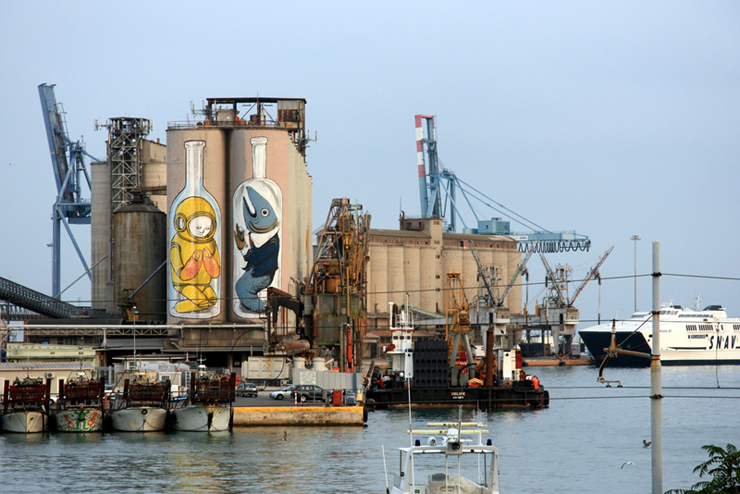
Blu, Erica Il Cane. Anacona, Italy. © Luna Park
Regarding my photography, I believe it too has matured over time. It has long-since been my goal for my photographs to reflect my passion and enthusiasm for street art. I aim to capture work in the best possible light, all the while taking context, materials and possible interpretations into consideration. Over years of observation, I have developed a deep and profound understanding of this incredibly diverse subject matter. I have embraced street art wholeheartedly and internalized it. It has had a pronounced influence on my photography and, as a result, my photography has become my own kind of street art.
Being that I am so close to the subject matter, I am hard pressed to put it into any kind of larger, art historical context. Nor do I necessary see that as my role or responsibility, at least not at this point in time. We are in the midst of a truly global art phenomenon whose parameters have yet to be set. Given the right context and the proper forum, I am willing to engage anyone in an intellectual conversation about the critical merits of street art. In the meantime – and as long as I am in the position to do so – I will continue doing what I love, explore this magnificent, vibrant yet decrepit city, absorb as much amazing art as possible, and create photographs as mementos. And when I run out of steam, maybe I’ll finally sit down and write a book about it one day.
Stefan Kloo: That’s rich…and rather laughable. It’s more the other way around – the trained critic approaches street art mostly with the established criteria his academic training provides. That’s only fair but won’t buy you a drink. In street art it’s about the raw authenticity, the creative kick and the unadulterated pleasure a grievously misguided act of vandalism can provide. If you can’t grasp that a lot of it is simply about mixing things up, you probably should not get on that ride. It’s still a lot about class and that we can’t allow to consolidate the established art world and the slippery street. It’s just snobbery, mostly a vain argument, but it fills the day. I honestly don’t see a conflict between, say, a painting by Poussin or Pollock and a Faile paste or a C215 stencil. In the end it’s how it speaks to you and if there’s a challenge in it for you. Only then do you need to query how relevant it is in terms of cultural anthropology.
What does a critic reply to Banksy’s sentiment “I’m not so interested in convincing people in the art world that what I do is ‘art,’ – I’m more bothered about convincing people in the graffiti community that what I do is really vandalism.” ? Doesn’t that wrap up the whole argument?
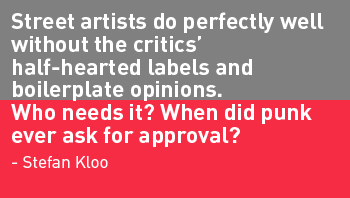 Street art represents a definite paradigm shift in the arts. It’s just a very liberating kick in the ass of bourgeois attitudes towards anything and the arts in particular. Most critics fail to recognize that, and can’t handle the rule bending imposition street art represents. The fact that street art gets by and continues to evolve in theory and practice without the sanctimonious blessing of the art establishment is testimony that the joke’s on them. And we already know how the wine and cheese crowd will speculate the wits out of the genre to buy back their long lost subversive streak and hipness credentials, blissfully oblivious that if you can afford to pay the prices street art commands in the galleries you are all out of street cred and are just buying a commodity. Street artists do perfectly well without the critics’ half-hearted labels and boilerplate opinions. Who needs it? When did punk ever ask for approval?
Street art represents a definite paradigm shift in the arts. It’s just a very liberating kick in the ass of bourgeois attitudes towards anything and the arts in particular. Most critics fail to recognize that, and can’t handle the rule bending imposition street art represents. The fact that street art gets by and continues to evolve in theory and practice without the sanctimonious blessing of the art establishment is testimony that the joke’s on them. And we already know how the wine and cheese crowd will speculate the wits out of the genre to buy back their long lost subversive streak and hipness credentials, blissfully oblivious that if you can afford to pay the prices street art commands in the galleries you are all out of street cred and are just buying a commodity. Street artists do perfectly well without the critics’ half-hearted labels and boilerplate opinions. Who needs it? When did punk ever ask for approval?
<<<> > << > < > < > > <<<>>>>>>BSA<<<> > << > < > < > > <<<>>>>>>BSA
To see more of Stefan Kloo’s work go here.
To see more of Luna Park’s work go here.
To see more of Becki Fuller’s work go here.
Becki and Luna’s blog The Street Spot is here.
 BROOKLYN STREET ART LOVES YOU MORE EVERY DAY
BROOKLYN STREET ART LOVES YOU MORE EVERY DAY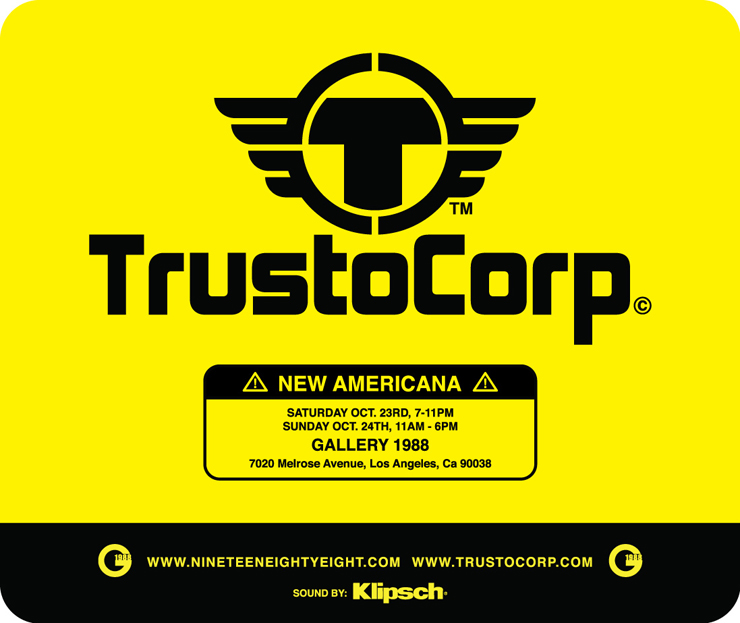
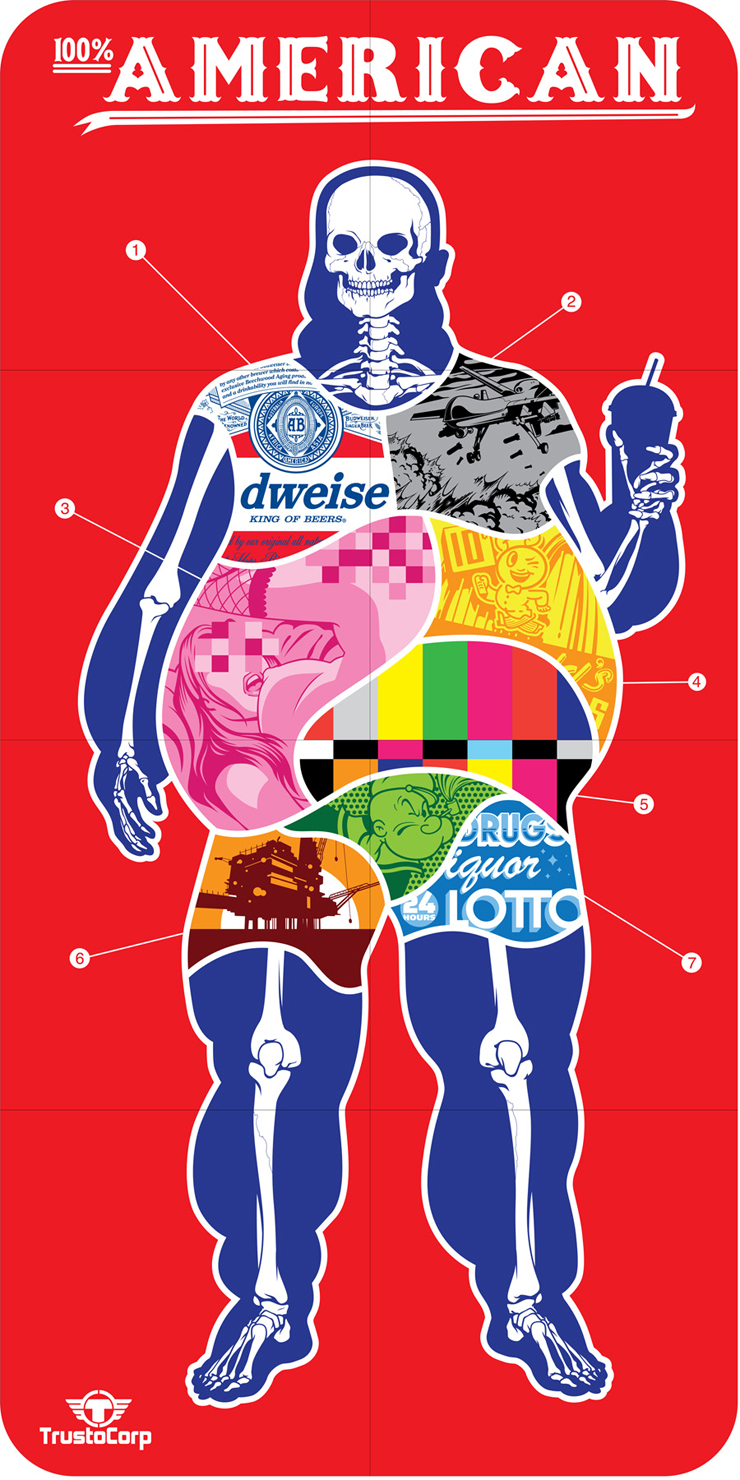
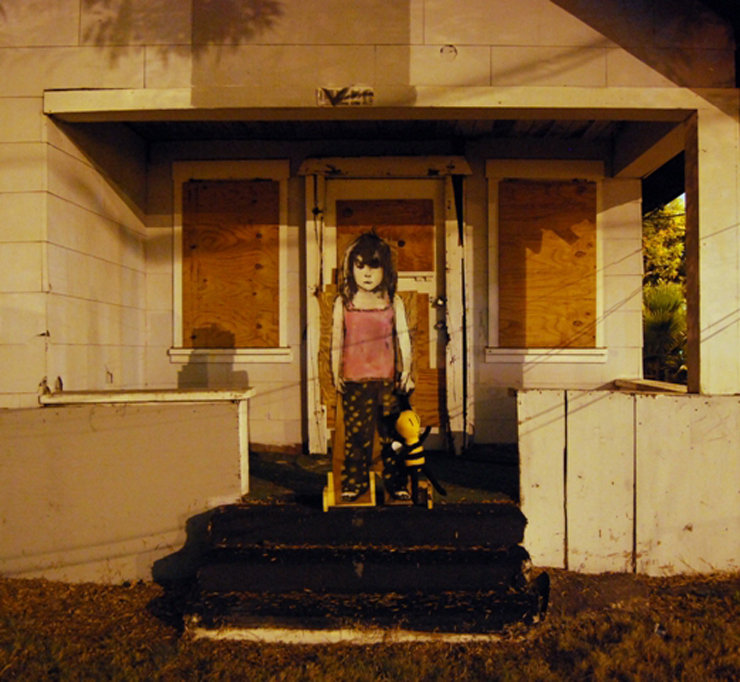
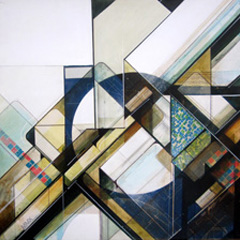
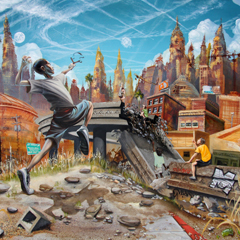
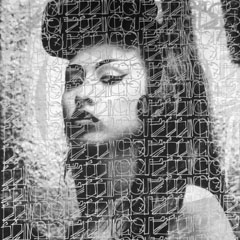
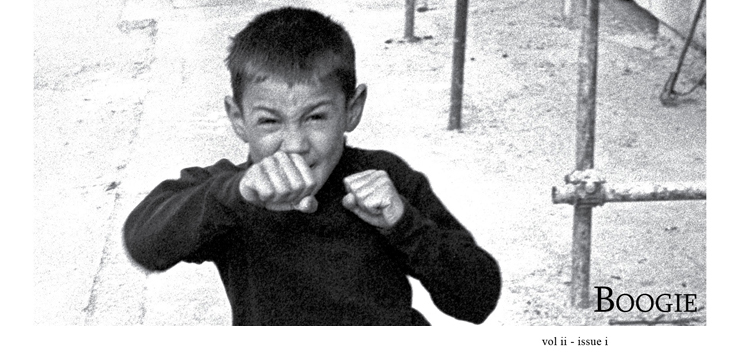

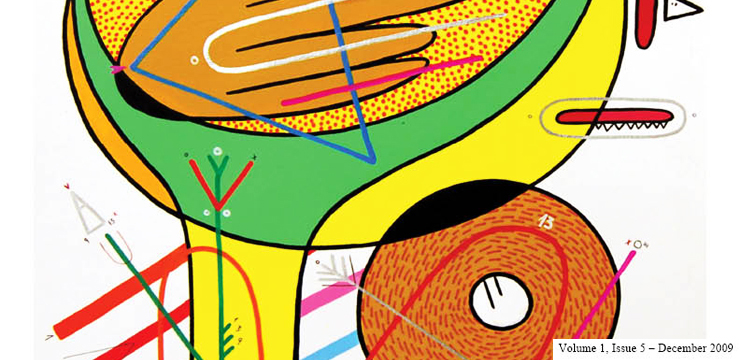
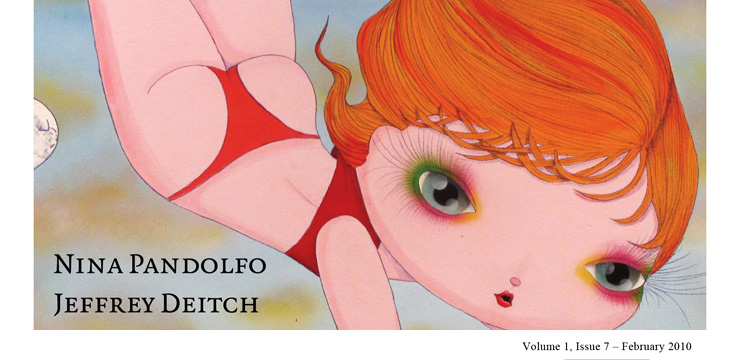
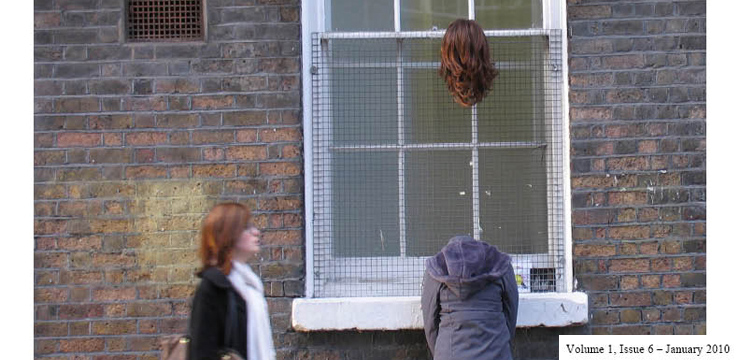
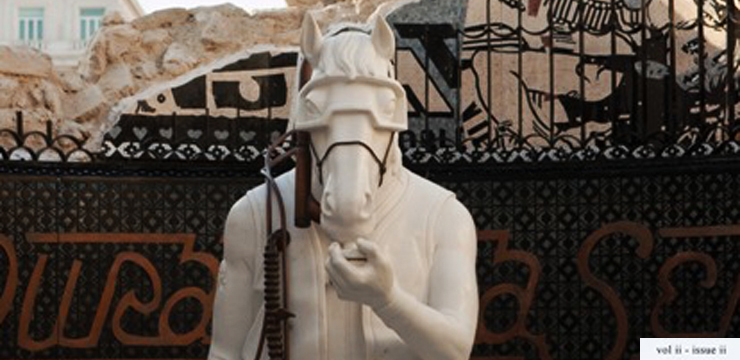
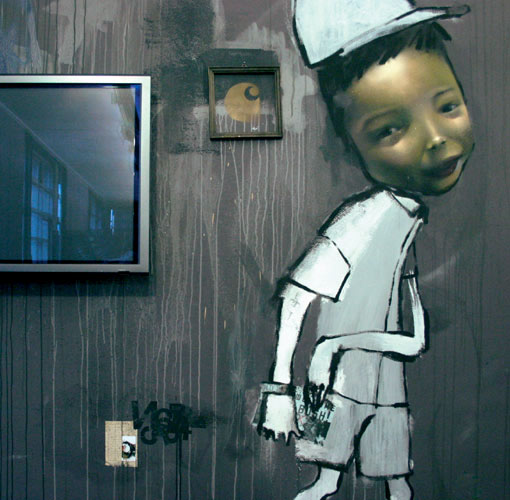
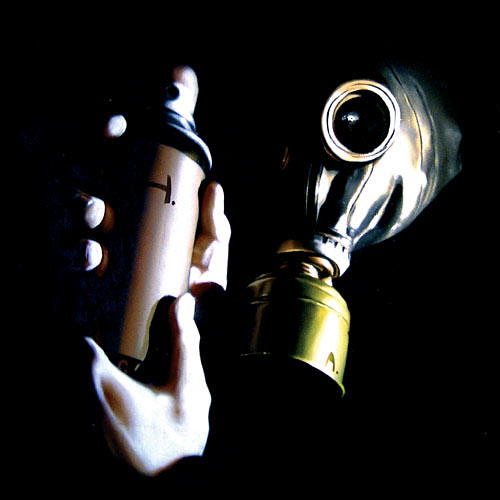
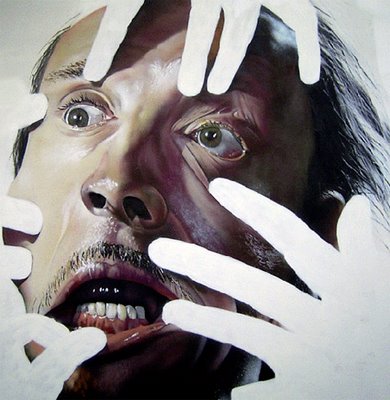
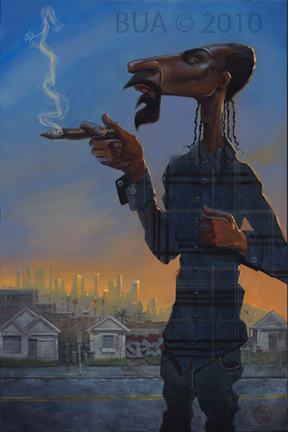 LOS ANGELES, Ca. – BUA, the legendary urban artist, proudly introduces his newest collection of original art, entitled BUA “POPS”, as well as showcasing some of his classic works on Saturday, September 11, 2010, at Hold Up Art, located in the heart of Downtown Los Angeles’ Little Tokyo district. For BUA, POPS represents more than just popular cultural representations and iconography or the style of art made famous by the likes of Warhol and Haring. Known as the artist “for the people, of the people, by the people”, POPS continues BUA’s message as an homage to the artist’s fan base as well as creating pervasive hip hop imagery recognizable across cultures.
LOS ANGELES, Ca. – BUA, the legendary urban artist, proudly introduces his newest collection of original art, entitled BUA “POPS”, as well as showcasing some of his classic works on Saturday, September 11, 2010, at Hold Up Art, located in the heart of Downtown Los Angeles’ Little Tokyo district. For BUA, POPS represents more than just popular cultural representations and iconography or the style of art made famous by the likes of Warhol and Haring. Known as the artist “for the people, of the people, by the people”, POPS continues BUA’s message as an homage to the artist’s fan base as well as creating pervasive hip hop imagery recognizable across cultures.


 Becki Fuller: I say the more people who are interested in street art enough to document it, the better! But yes, it has definitely changed things. When I first started shooting street art, I easily received a lot of attention just because there was a much smaller group of people who were documenting it and sharing it. And for a while it took some of the fun out of it for me when I realized that people were trading locations with each other or getting them from artists even before the work went up, really turning on the pressure to photograph a piece within hours of its appearance. But I quickly came to terms with what I want to do and what I am willing to do in order to continue enjoying street art photography. I honestly don’t pay too much attention to much of what other people are doing, just because I need to maintain balance in my life and I need to keep my competitive spirit in check.
Becki Fuller: I say the more people who are interested in street art enough to document it, the better! But yes, it has definitely changed things. When I first started shooting street art, I easily received a lot of attention just because there was a much smaller group of people who were documenting it and sharing it. And for a while it took some of the fun out of it for me when I realized that people were trading locations with each other or getting them from artists even before the work went up, really turning on the pressure to photograph a piece within hours of its appearance. But I quickly came to terms with what I want to do and what I am willing to do in order to continue enjoying street art photography. I honestly don’t pay too much attention to much of what other people are doing, just because I need to maintain balance in my life and I need to keep my competitive spirit in check.
 Stefan Kloo: I’m absolutely O.K. with others doing the same thing, patrolling the same alleys, getting the same shots. How can you not. It’s like stone soup; it just gets better with everybody contributing the missing ingredient. So you got a better shot, got it first, got the only shot before its gone? What of it? – It’s not a competition! And don’t expect anything in return, most of the artists don’t. If it chaps your hide that someone else got the same shot or got it first, it either means that you’re taking yourself too serious or that you’re a bit of a one trick pony. Just find a different angle, heck find a different subject if your doing it for the approval of others.
Stefan Kloo: I’m absolutely O.K. with others doing the same thing, patrolling the same alleys, getting the same shots. How can you not. It’s like stone soup; it just gets better with everybody contributing the missing ingredient. So you got a better shot, got it first, got the only shot before its gone? What of it? – It’s not a competition! And don’t expect anything in return, most of the artists don’t. If it chaps your hide that someone else got the same shot or got it first, it either means that you’re taking yourself too serious or that you’re a bit of a one trick pony. Just find a different angle, heck find a different subject if your doing it for the approval of others.
 Becki Fuller: Honestly, it really pisses me off when artists or people who should know better do that…I enjoy receiving a nod of recognition for my efforts as much as anyone anywhere does. I spend a lot of time, thought, and money doing what I do, often going into debt just to upgrade my camera or buy a new lens, all without receiving any monetary compensation. I can’t even tell you how many books my photographs have been included in, and it is usually rare for me to receive even so much as a free copy in return. So to directly lift my image and treat it as if it is your own is a slap in the face, as far as I am concerned.
Becki Fuller: Honestly, it really pisses me off when artists or people who should know better do that…I enjoy receiving a nod of recognition for my efforts as much as anyone anywhere does. I spend a lot of time, thought, and money doing what I do, often going into debt just to upgrade my camera or buy a new lens, all without receiving any monetary compensation. I can’t even tell you how many books my photographs have been included in, and it is usually rare for me to receive even so much as a free copy in return. So to directly lift my image and treat it as if it is your own is a slap in the face, as far as I am concerned.


 Luna Park: Hogwash. To dismiss all street art photographers as unsophisticated fan boys is an unfair characterization and a gross oversimplification. We are as varied in our backgrounds and talents as the artists whose work we document. In discussing the quality of street art photography, one must differentiate between two issues: the work being documented and the photography itself. Regarding the work being documented, street art photographers are uniquely positioned to recognize trends, chart artistic growth, and identify influences within our own particular street art microcosms. While I’m an unabashed fan, I’m not uncritical: I’m very capable of forming my own opinions and I have distinct likes and dislikes, some of which aren’t rational. But that’s the nature of art; it doesn’t always speak to you on an intellectual level. Astute followers of my photo stream know that what I post is heavily curated, that is, what is missing from my Flickr speaks volumes. I walk past mediocre art on a daily basis; if it doesn’t engage me, I don’t waste time photographing it. If anything, I would say my taste in street art has become decidedly more refined over the years.
Luna Park: Hogwash. To dismiss all street art photographers as unsophisticated fan boys is an unfair characterization and a gross oversimplification. We are as varied in our backgrounds and talents as the artists whose work we document. In discussing the quality of street art photography, one must differentiate between two issues: the work being documented and the photography itself. Regarding the work being documented, street art photographers are uniquely positioned to recognize trends, chart artistic growth, and identify influences within our own particular street art microcosms. While I’m an unabashed fan, I’m not uncritical: I’m very capable of forming my own opinions and I have distinct likes and dislikes, some of which aren’t rational. But that’s the nature of art; it doesn’t always speak to you on an intellectual level. Astute followers of my photo stream know that what I post is heavily curated, that is, what is missing from my Flickr speaks volumes. I walk past mediocre art on a daily basis; if it doesn’t engage me, I don’t waste time photographing it. If anything, I would say my taste in street art has become decidedly more refined over the years.
 Street art represents a definite paradigm shift in the arts. It’s just a very liberating kick in the ass of bourgeois attitudes towards anything and the arts in particular. Most critics fail to recognize that, and can’t handle the rule bending imposition street art represents. The fact that street art gets by and continues to evolve in theory and practice without the sanctimonious blessing of the art establishment is testimony that the joke’s on them. And we already know how the wine and cheese crowd will speculate the wits out of the genre to buy back their long lost subversive streak and hipness credentials, blissfully oblivious that if you can afford to pay the prices street art commands in the galleries you are all out of street cred and are just buying a commodity. Street artists do perfectly well without the critics’ half-hearted labels and boilerplate opinions. Who needs it? When did punk ever ask for approval?
Street art represents a definite paradigm shift in the arts. It’s just a very liberating kick in the ass of bourgeois attitudes towards anything and the arts in particular. Most critics fail to recognize that, and can’t handle the rule bending imposition street art represents. The fact that street art gets by and continues to evolve in theory and practice without the sanctimonious blessing of the art establishment is testimony that the joke’s on them. And we already know how the wine and cheese crowd will speculate the wits out of the genre to buy back their long lost subversive streak and hipness credentials, blissfully oblivious that if you can afford to pay the prices street art commands in the galleries you are all out of street cred and are just buying a commodity. Street artists do perfectly well without the critics’ half-hearted labels and boilerplate opinions. Who needs it? When did punk ever ask for approval?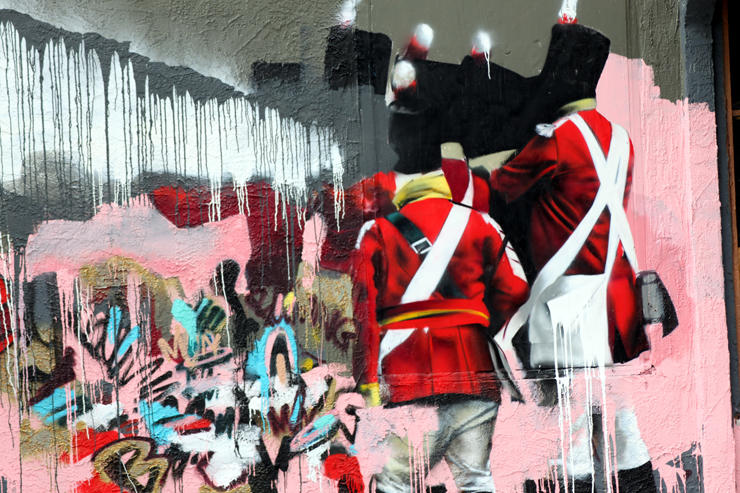
 We’ve got a love affair going on right now with everything Street Art. Part of the reason we know so much about it is because we can see images of it on the Internet. And of course in books, magazines, in apps, and if you are lucky, on the street.
We’ve got a love affair going on right now with everything Street Art. Part of the reason we know so much about it is because we can see images of it on the Internet. And of course in books, magazines, in apps, and if you are lucky, on the street.



